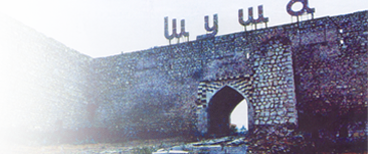 The Ecological Concern Public Association and scientists of the Azerbaijan National Academy of Sciences (ANAS) call on Armenia to stop the ecological terrorism in the occupied territories of the country.
The Ecological Concern Public Association and scientists of the Azerbaijan National Academy of Sciences (ANAS) call on Armenia to stop the ecological terrorism in the occupied territories of the country.
On Sept. 25, the Public Association presented the results of the project “Assessment of ecological damage to hydrobiological environment of the country during the Armenian aggression against Azerbaijan.” The project has studied hydrosphere of the Azerbaijani regions, bordering with Armenia and ecologically assessed the damage to hydrobiological environment. The project was implemented jointly with scientists from the ANAS Institute of Zoology, Geography, Microbiology and Soil.
Using water of the Azerbaijani rivers, whose sources are located in the territories occupied by Armenia, is extremely dangerous not only in domestic but also for agriculture purposes, said Mammad Salmanov, the Academician and Director of the ANAS Institute of Microbiology.
“Water basin in the Araz river is polluted due to the fact that Armenia pours off all the contaminated water directly into this river. Moreover, there is serious pollution and its growth in the Agstafachay and its basin year by year, because domestics wastes of the Armenian Dilijan and Ijevan industrial centers and other settlements are poured off into this river,” said Salmanov.
According to the Head of the biology of aquatic animals department of the ANAS Institute of Zoology, Doctor of Biological Sciences Zulfugar Guliyev, for about 20 years, the Azerbaijani water basins bordering with Armenia, which plays an important role in development of the country’s fishing economy have undergone intense pollution. “There is a cut in the number of endemic species of aquatic animals, caused by the pollution. Some species faced with the threat of disappearance may soon be listed in the “Red Book”,” Guliyev said.
Scientists believe that a many-centuries fertile soil layer have already destroyed or under threat of destruction, caused by the systematic pollution of soil and watershed, located in the territories of Azerbaijan occupied by Armenia, and hydrobiological environment reached a mark of environmental crisis.
The Ecological Concern Public Association and scientists of Azerbaijan urged the international community, environmental and community organizations to condemn the destructive activities of Armenia with regard to biodiversity of the Azerbaijani nature, aimed at the destruction of the environment.
The conflict between the two South Caucasus countries began in 1988 when Armenia made territorial claims against Azerbaijan. Armenian armed forces have occupied 20 percent of Azerbaijan since 1992, including the Nagorno-Karabakh region and 7 surrounding districts. Azerbaijan and Armenia signed a ceasefire agreement in 1994. The co-chairs of the OSCE Minsk Group – Russia, France, and the U.S. – are currently holding the peace negotiations.
trend

